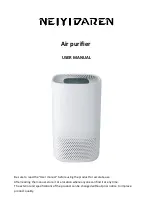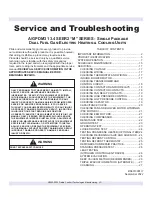
3. INSTALLATION (
CONT
’
D
)
3.5 I
NSTALLING
THE
D
UCTWORK
AND
THE
REGISTERS
(
CONT
’
D
)
10
CAUTION
When performing duct connection to the furnace ducts (Method 1), these ducts must be sized to support the
additional airflow produced by the ERV/HRV. Also, the supply duct must be a metal duct. It is recommended that
the ERV/HRV is running when the furnace is in operation in order to prevent backdrafting inside ERV/HRV.
3.5.3 S
IMPLIFIED
I
NSTALLATION
(
AS
ILLUSTRATED
IN
S
ECTION
2.3)
There are two methods (illustrated below) for connecting the unit to the furnace ducts:
M
ETHOD
1: R
ETURN
-S
UPPLY
M
ETHOD
2: R
ETURN
-R
ETURN
WARNING
When performing duct connection to the furnace, installation must be done in accordance with all applicable
codes and standards. Please refer to your local building code.
!
CAUTION
If using Method 2, make sure the furnace blower operation is synchronized with the unit operation! See Section 5.
M
INIMUM
3’ (0.9
M
)
S
TALE
AIR
INTAKE
:
• Cut an opening into the furnace return duct not less than 10 feet (3.1 m) from the furnace.
• Connect this opening to the stale air intake port of the HRV/ERV (as shown above).
F
RESH
AIR
DISTRIBUTION
:
Same instructions as for Method 1 or Method 2, section 3.5.2 in previous page)
A+B=
NOT
LESS
THAN
10’ (3.1
M
)
B
A
VJ0086
M
ETAL
DUCT
M
INIMUM
18’’ (0.5
M
)
A+B=
NOT
LESS
THAN
10’ (3.1
M
)
B
A
VJ0087
For Method 2 (Return-Return), make sure there is a distance of at least 3 feet (0.9 m) between the 2 connections to the furnace
duct.
NOTE: For Method 1, it is not essential to synchronize the furnace blower operation with the HRV/ERV operation, but we
recommend it.






































